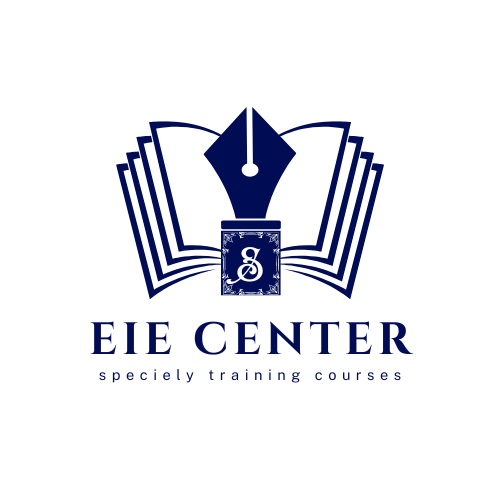Mastering Heat Exchangers: Types, Applications, Design, Operation, and Maintenance

About Course
Heat exchangers are crucial and costly equipment used in various industries. This heat exchanger design, types, operation, and maintenance conference equips you with an in-depth understanding of the fundamental principles of heat transfer, fluid flow, and their applications in designing and operating multiple heat exchangers such as shell and tube, plate, air-cooled, and speciality units, enhancing their efficiency and extending their service life.
A meticulous presentation of the main types of industrial heat exchangers, their distinguishing features and aspects, will be delivered, providing practical guidelines for selecting the appropriate type for particular applications.
At this heat exchanger design, types, operation, and maintenance conference, You will gain a firmer grasp of how to apply the relevant API, TEMA, and ASME codes, standards, and best practices. Discussions will include the fabrication, materials of construction, costs of tubular units, condensers, and reboilers, the impact and mitigation of fouling, and the causes and prevention of exchanger tube vibration and damage.
Understanding What a Heat Exchanger Is
Heat exchanger training is a critical component for those involved in operating and maintaining heat exchangers across several industries. This comprehensive heat exchanger course covers the myriad aspects crucial to mastering heat exchangers, including their types, applications, and various design considerations.
With a focus on enhancing knowledge of the applications of heat exchangers and understanding the different types of heat exchangers, this heat exchanger design, types, operation, and maintenance course offers a substantial amount of information relevant to heat exchanger types and applications, as well as addressing the heat exchanger maintenance procedures that are essential for prolonging the life of these critical components.
Conference Objectives
At the end of this heat exchanger design, types, operation, and maintenance conference, participants will be able to:
- Highlight the pivotal function and significance of heat exchangers in cost-effective plant operations.
- Clearly understand the fundamentals of heat transfer, hydraulics, and fluid flow and their application in the thermal design of heat exchangers.
- Offer methodologies for the mechanical design of heat exchangers following industry codes, standards, and best practices, specifically ASME BPVC Section VIII, TEMA, and API 660, 661, and 662.
- Understand the cost-effective technologies and best practices for improving the performance of heat exchangers.
- Gain essential integrated knowledge about heat exchangers’ hydraulic, thermal, and mechanical design.
- Understand, predict, and identify causes of performance degradation and damage mechanisms that affect heat exchangers’ fitness for continued service, thereby reducing the risk of potential failures and waste of energy.
Targeted Competencies
At the end of this heat exchanger design, types, operation, and maintenance conference, the participants will be able to:
- Heat exchangers design characteristics.
- Understanding of heat transfer principles.
- Understand international codes and standards for fabrication, operation, and maintenance.
- Problems in operation: Fouling and performance monitoring.
- Learn about inspection of corrosion, erosion, and structural integrity.
Conference Content
Unit 1: Types and Application of Heat Exchangers
- Overview and fundamentals.
- Understand the significance of heat exchange in the petroleum, petrochemical, and process industries.
- What are heat transfer fundamentals and heat transfer coefficients?
- Heat exchanger types and applications.
- Shell and tube heat exchangers.
- Compact heat exchangers.
- Plate heat exchangers.
- Learn how to print circuit heat exchangers.
- Heat pipes.
- Air-cooled heat exchangers.
- Regenerative heat exchangers.
- Geometry of Shell and Tube Heat Exchangers (STHE) and Double Pipes – TEMA nomenclature, front-end head types, shell types, rear-end types, double pipe units, and selection guidelines.
Unit 2: Thermal and Hydraulic Design of Heat Exchangers
- Size and Specifying the heat exchanger.
- Temperature difference in STHE.
- Learn about countercurrent, co-current, and cross-current.
- TEMA flow arrangements and comparisons.
- Worked example.
- Velocity triangles and performance were derived from the first principles.
- Pump performance curves: head capacity, power, efficiency.
- Understand the system curve: static, friction, and pressure head components.
- Learn about fluid flow and pressure drop.
- Shell and tube heat exchangers.
- Plate heat exchangers.
- General design considerations.
- Condensers and Reboilers.
Unit 3: Mechanical Design of Heat Exchangers
- What are mechanical design, construction codes, and best practices?
- ASME B&PVC Section VIII.
- API 660, 661, and 662.
- TEMA.
- Learn the basic design of heat exchangers – S&THE, PHE, and ACHE.
- Special design considerations.
- Piping loads on exchanger nozzles.
- Impact of service conditions on material selection.
- Shell and tube heat exchangers.
- Plate heat exchangers.
- Learn about construction materials for heat exchangers.
- Fabrication of heat exchangers.
Unit 4: Operation and Maintenance of Heat Exchangers
- Foul in heat exchangers.
- Learn about types of mechanisms and their economic impact on design and operation.
- Fouling mitigation by design.
- Understand foul mitigation by operation and maintenance.
- Understand corrosion and erosion in heat exchangers.
- Heat Exchanger Inspection Methods.
- Operation and Troubleshooting.
- Performance monitoring and Testing.
- Flow-induced vibration, mechanisms, vibration prediction, damage numbers, and design procedure to avoid vibration, including baffle selection, rod baffle exchangers, and twisted tube exchangers.
- Cleans strategies and methods: S&THE, PHE, ACHE.
- Heat Exchanger Repairs.
- What are the removal and replacement of heat exchangers?
- Learn about cost-effective maintenance and repair of heat exchangers.
Unit 5: Performance Enhancement and Optimization of Heat Exchangers
- Heat transfer augmentation techniques.
- Finned tubes.
- Understand in-tube enhancement, Tube inserts, and sintered coatings.
- Tube Bundle Replacement – Alternative enhanced tube bundle designs.
- Rod baffle.
- Heli baffle.
- Twisted tube.
- Pinch technology.
- Heat exchanger train optimization.
- Heat integration basics.
